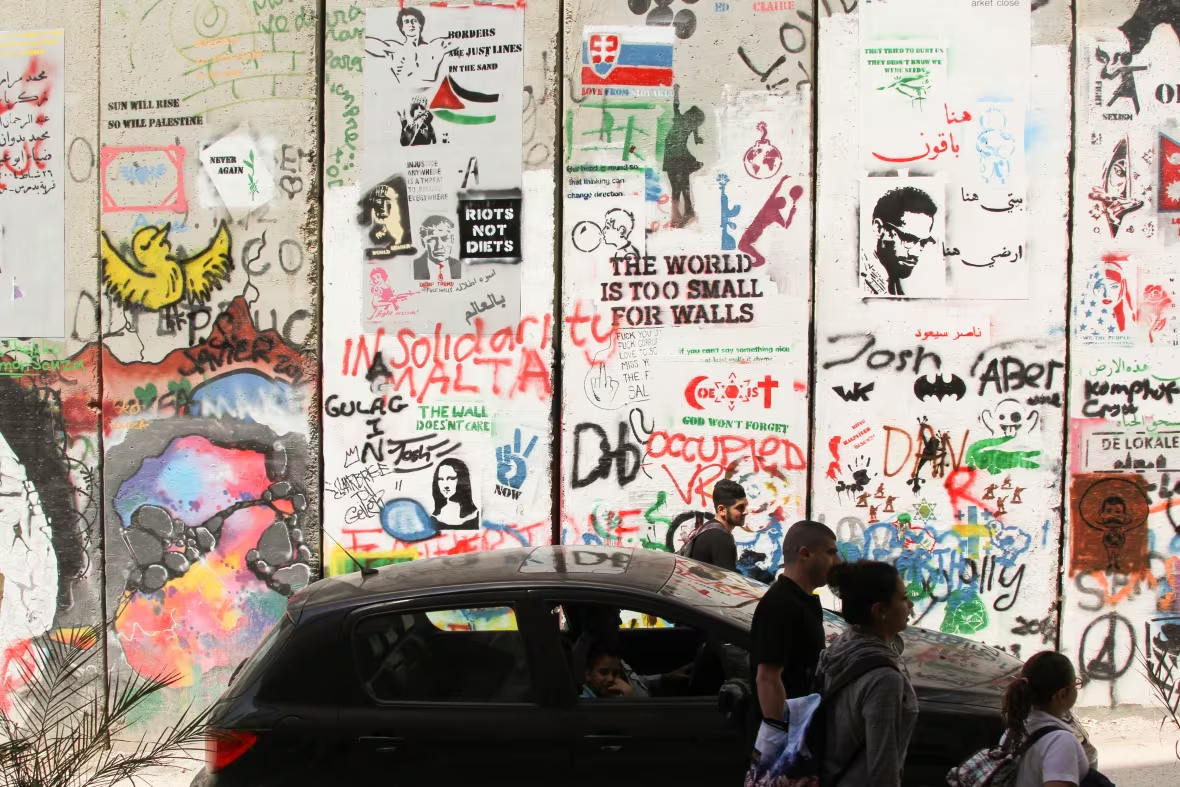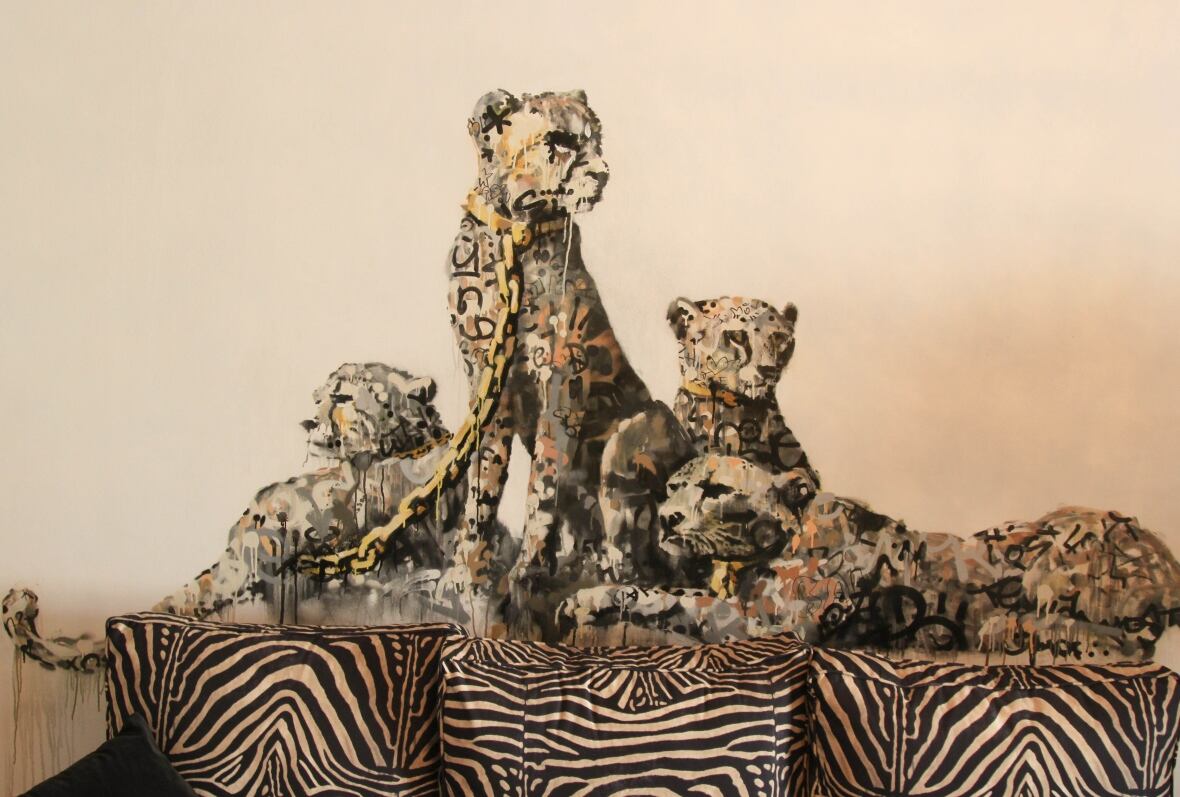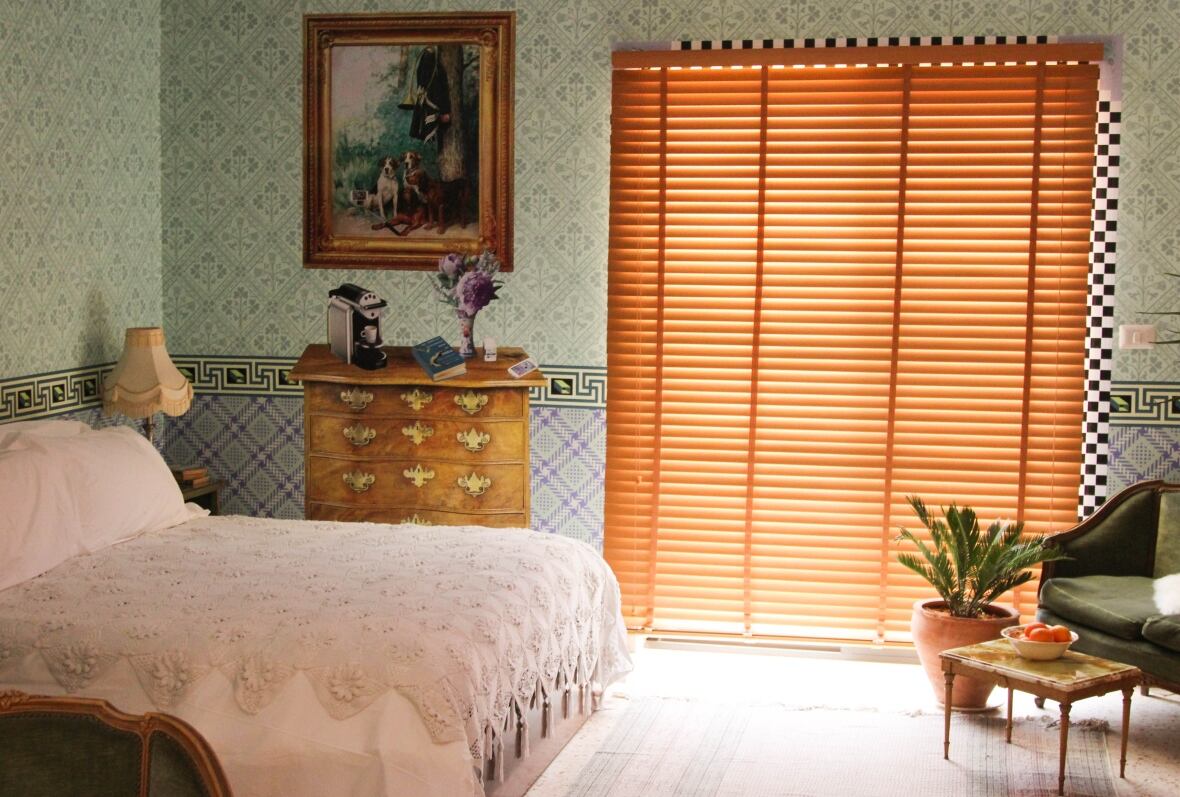Confronting barriers at Banksy's provocative Walled Off Hotel in Bethlehem
Elusive U.K. artist makes a statement with hotel in occupied West Bank

Imagine waking up, wrapped in luxurious linens, in the king-sized bed of a hotel's presidential suite — to be greeted by a view of a hulking concrete wall just outside the window.
That's what some travellers are paying hundreds of dollars to experience at a new hotel featuring the work of the mysterious British street artist Banksy in the West Bank city of Bethlehem.
The Walled Off Hotel is perhaps the only inn around the world that markets its bad view as its chief selling point. The establishment has the Israeli separation barrier, covered in graffiti, on one side and an army watchtower on the other.

The nine-room hotel opened in late March. In typical Banksy style, the former apartment building in Bethlehem was transformed in strict secrecy.
The hotel's owner and manager, Wisam Salsaa, would not divulge any details about Banksy's time in the Israeli-occupied West Bank, while the artist was decorating several of the hotel's rooms.
"I cannot tell you anything," Salsaa told CBC News, as a wry smile spread across his face. When asked what Banksy is like, he offered a simple response: "He's a human being."

But Salsaa had more to say when it came to the hotel itself, which he said has given Bethlehem a much-needed economic shot in the arm. About 50 Palestinians are working at the hotel — staffing the front desk, cleaning rooms and serving customers in the restaurant and bar.
In addition, since the hotel only has nine rooms, running from around $60 US a night for a budget room to more than $900 US, visitors who find no room at his inn often stay at other local establishments.
But Salsaa said his main reason for collaborating with Banksy — who has supported Palestinians in the past with street art projects in Bethlehem and the Gaza Strip — is to shed light on the Israeli occupation.
- Montreal artist designs 'room with no view' in Banksy's new Walled Off Hotel
- Banksy street art up for auction
"The message that we're trying to give to the visitors is that we Palestinians are humans," he said. "We deserve life and look at how we live. We cannot live like this forever."

Most of the Israeli separation barrier, which separates much of the West Bank from Israel, is chain-link fence, but in some locations, including parts of Jerusalem and Bethlehem, it is a concrete wall six to eight metres high.
While critics call it little more than an attempt to annex Palestinian land, Israel says the separation barrier was constructed to stop Palestinian attacks following the outbreak of the second Palestinian Intifada, or uprising. The Israeli government has defended the barrier, saying the number of Israelis killed by suicide bombings decreased after it was built.
Many artists and activists — Palestinians and those from abroad — have expressed their displeasure with the barrier through art. Graffiti has been scrawled all along the wall as it snakes through Bethlehem.

Now, visitors to the Walled Off Hotel can drop by the Wall*Mart, just down the street, and choose a variety of messages that they can spray-paint on the barrier, not far from where Pope Francis bowed his head and prayed during a visit to Bethlehem in 2014.
Banksy designed a number of original pieces for the hotel, including this mural that appears in the sitting area of the presidential suite.

Banksy worked with two other artists — Palestinian Sami Musa and Dominique Pétrin from Montreal — to decorate the hotel's nine rooms.
Pétrin said it was "completely crazy" when she heard that Banksy admired her art and wanted her to help with the hotel project.
"I thought it was a prank for the longest time, until, I think, I got some money in my bank account." That was meant to help her plan the design for room No. 4.

"The only sort of instruction I got was to create a room that was inspired by the idea of a British colony that is kind of falling apart," Pétrin told CBC News from Montreal.
The inspiration for the room comes from the period between 1920 and 1948 when the Palestinian territories were under British administration and known as the British Mandate of Palestine.

The design is "a lexicon of colonial patterns and decoration. But it's not really like it's not completely accurate. It's more like a collage of different periods mixed together," Pétrin said.
Pétrin, who had never visited the Middle East before, spent about a month in Bethlehem in February, largely isolated from the outside world to preserve the secrecy of the project.
Describing her experience as "life-changing," Pétrin said she was "completely shocked" by witnessing the occupation that Palestinians in the West Bank live under.
"From my privileged position, I never encountered such ways, so it's been a shock, and I'm still processing it," she said. "The whole time I was there I tried to gather as much information as I can."
Several of the rooms have a view of an Israeli security watchtower. The hotel also houses a museum focusing on the occupation while the second floor of the establishment is a gallery featuring the works of Palestinian artists.
